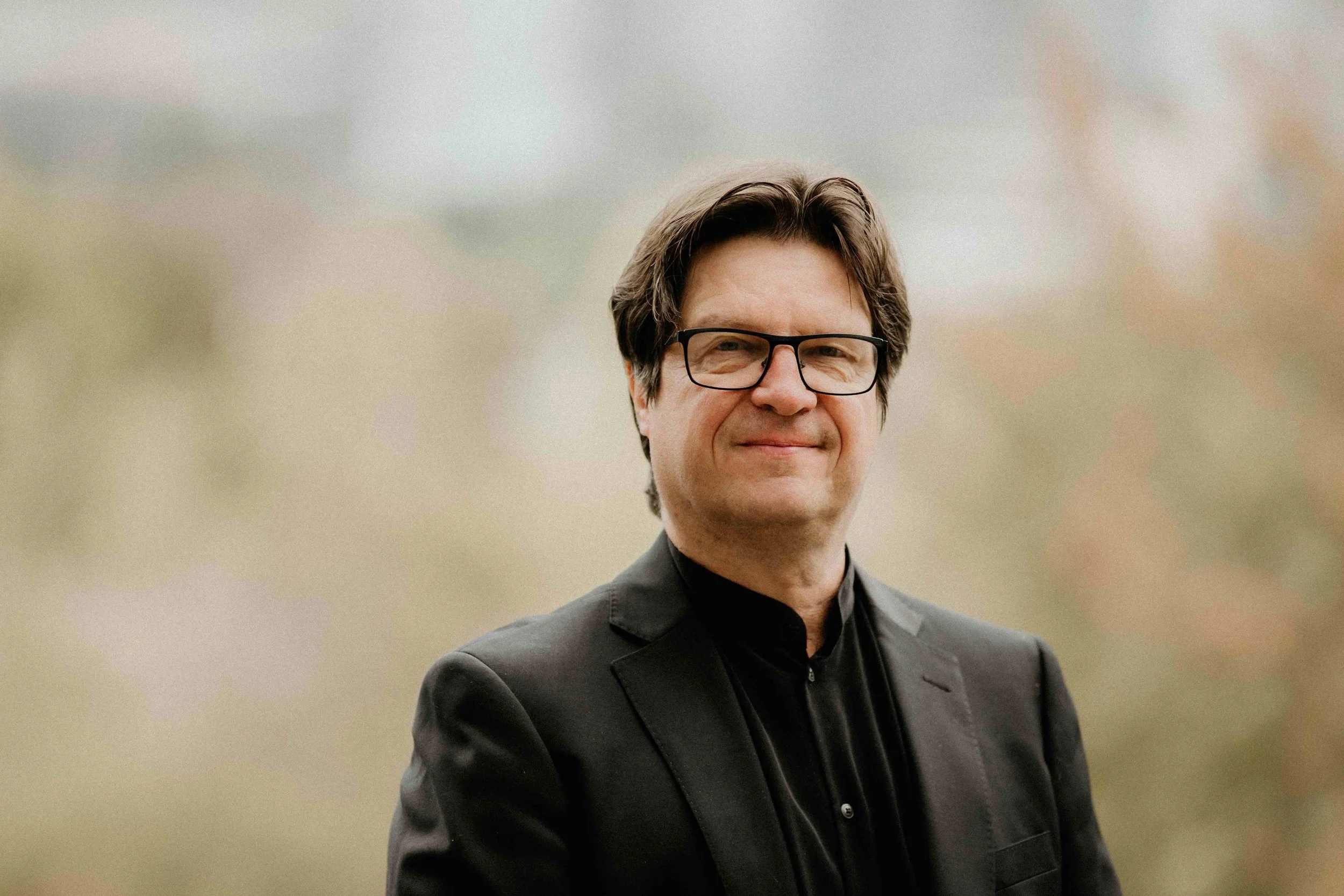Stir Q&A: At Palestrina 500, Kari Turunen throws a birthday bash for a 16th-century composer
Vancouver Chamber Choir concert features some of the Italian virtuoso’s most enduring Renaissance music
Kari Turunen. Photo by Diamond’s Edge Photography
Vancouver Chamber Choir presents Palestrina 500 at the Christ Church Cathedral on April 11 at 7:30 pm
GIVEN THE FACT that Italian composer Giovanni Pierluigi da Palestrina is one of the leading figures of late Renaissance music, it’s only fitting he gets a 500th birthday party.
The Vancouver Chamber Choir is celebrating the virtuoso on April 11 with a Christ Church Cathedral concert dedicated entirely to his work. The pieces included, from the well-known motet “Sicut cervus” to the vocally intricate mass “Missa Papae Marcelli”, span four decades of 16th-century artistic creations.
Stir connected with Kari Turunen, artistic director of the Vancouver Chamber Choir, to learn a bit more about Palestrina ahead of his birthday bash. Turunen will lead a pre-show artist talk at 7 pm.
When you first heard recordings of Palestrina’s music, what about it stood out to you? What kind of impact would you say his compositions had on your relationship with Renaissance music?
I really can’t remember. I have a feeling that I sang Palestrina before I listened to it. To be honest, in my late teens, I probably did not think too much of it. But I do remember Renaissance music on the whole having a strong impact on me. Something in the inner logic and sheer beauty just felt right. But I certainly would not have dreamt of spending a lifetime so closely involved with it.
For those who may be unfamiliar with the term, what is polyphonic choral music, and what sort of role did Palestrina play in preserving and disseminating it?
To simplify things a little, polyphonic choral music is music where every line, every voice is a melody in its own right. Most often these voices imitate each other either strictly or loosely. Contrary to music with a clear melody and accompanying voices, every voice part in polyphony is as important and as independent. The harmony, the chords are in theory results of the melodic lines, although to be honest harmonic thinking certainly creeps into polyphony quite early.
Palestrina, who was a boy chorister, was taught the music of the generation that preceded him. Like so many of his peers, he learned his trade by copying and imitating his famed predecessors, like Josquin des Prez. So, in a way, he was preserving this tradition, and on the other hand, he developed it in his own direction, like many of his contemporaries.
During his lifetime, Palestrina and his music were famous in Rome, but not much beyond it. World fame came long after his death, and even then mostly thanks to textbooks that took his style to be representative of his time. Music students all around the globe still write exercises in Renaissance music based on his style. So, in a way, Palestrina played a huge role, but definitely not in a way that he would have expected. Fortunately, he left behind a truckload of music—and more and more, it has been his own music, and not an analysis of his style, that has made his present fame.
Vancouver Chamber Choir. Photo by Diamond’s Edge Photography
Why do you think “Missa Papae Marcelli” is such an enduring, popular work?
This answer might feel strange, but I think it is because the mass is so well known. It is without doubt a really good mass, and its credo is one of the best ever written. But he has some other works that are just as good, so the reason for its popularity has to do with something else than sheer quality or beauty. In this case, you need a good story and then repetition.
The good story is that its role in preserving sacred polyphony in the Catholic Church was blown totally out of proportion. The fact is that it was performed to a group of cardinals in Rome in 1565. Their assignment was to gauge whether the words of contemporary sacred compositions could be understood, or [if] this was impossible, as some critics claimed. The cardinals commissioned three works to be performed to them, and one of these was indeed the “Missa Papae Marcelli”. In later myth-building, the other works were forgotten and Palestrina’s mass was seen to be the critical work to save polyphony from being banned. So the music has a story, a little like the Mozart Requiem or Handel’s Messiah, and this always helps to make it feel special. Then you just need repetition to make the work recognizable—although I have to point out that even his contemporaries seem to have enjoyed this mass, as in the choirbook into which it was first copied, someone wrote, “This is a most beautiful mass.”
With all its vocal lines, is it a challenge to conduct or perform?
Performing “Missa Papae Marcelli”, or in our case the credo from the mass, is a bit of a challenge for modern choirs, not so much because of the vocal lines, but because of the voice distribution. Originally, five of the six voice parts would have been sung by adult men. Even with a little adjusting, the work is still bottom-heavy with two tenor and two bass lines. Finding the right voices for each line and then balancing them is the biggest challenge. Technically, conducting the mass is a piece of cake, but making it vibrant and making the music and text talk is always a challenge.
How did you choose which compositions you wanted to include on the Palestrina 500 program? What sort of range will audiences hear in terms of the different phases of Palestrina’s life and music?
I wanted there to be quite a bit of variation. Palestrina wrote his sacred music in a surprisingly wide array of styles. I think most of us will recognize the pure Palestrina style of, say, “Sicut cervus”, but far fewer listeners will know his more antiquated style or his later polychoral style. You can hear it all stems from the same legacy, but the variance is more colourful than one would assume. The music of our concert is from the 1560s to the 1590s, so mostly from his mature period when he was the maestro of St. Peter’s [Basilica] in Rome. The concert is shaped around the regular mass movements selected from four different masses, with motets for four to eight voices interspersed. There are some familiar hits and a lot of music much less sung.
Why do you think it’s important for us to continue studying and celebrating Palestrina and his legacy, both now and into the future?
The main reason is that he was an exceptional composer who wrote an incredible amount of wonderful music that has been preserved to us in printed collections and manuscripts. Now, I don’t think he is in any respect better than many composers who are less celebrated, and you could well make a case for concentrating on them instead. In many ways, it would indeed make just as much, if not more sense to study their music, perform it, and celebrate their unique legacy.
But maybe there is still a point in returning to Palestrina; because he has been such a central figure in music history, there is a tradition of performing Palestrina that runs through centuries. In a strange way, Palestrina’s greatest legacy in my mind is this legacy of performing his music. We are part of a chain of generations that reaches back all the way to 16th-century Rome. To me, at least, this feels deeply meaningful. ![]()


























